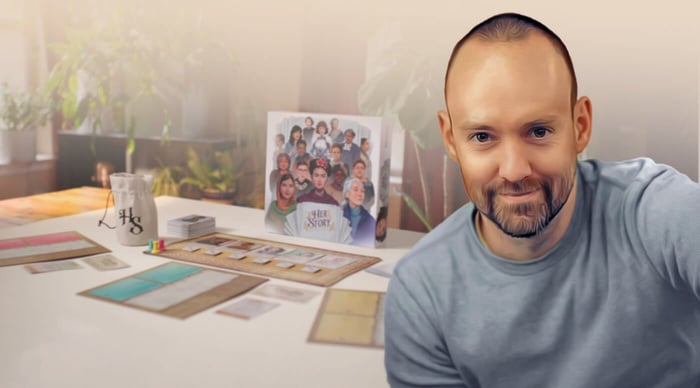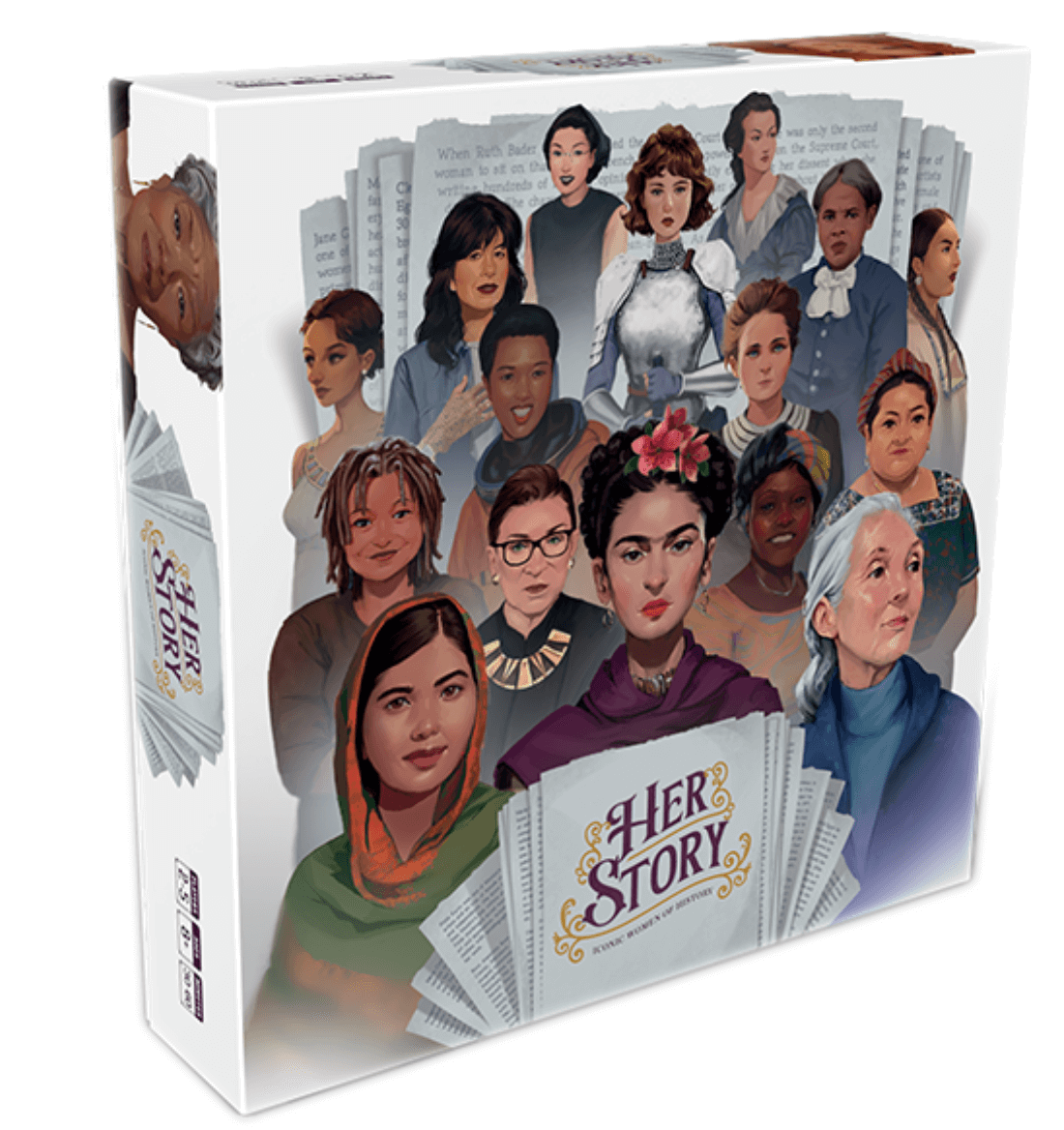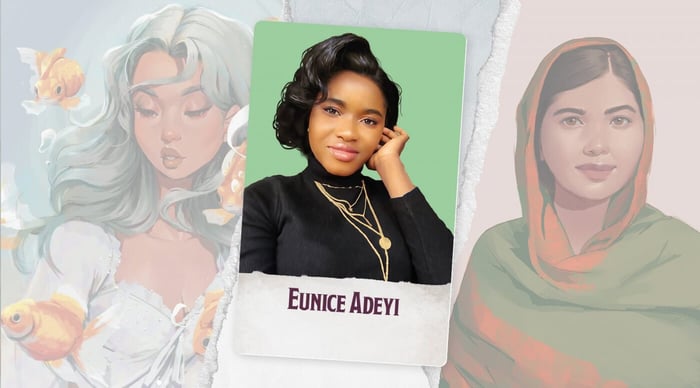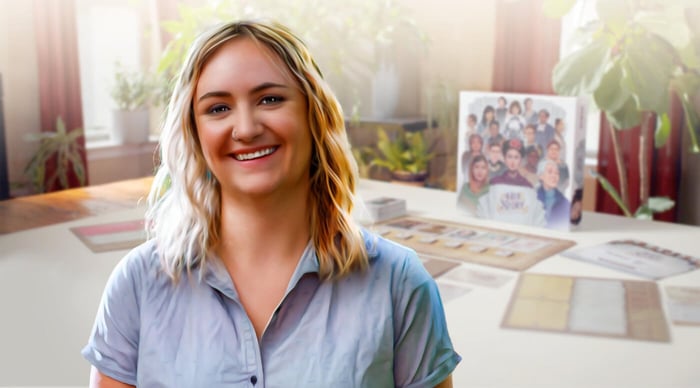We're so excited about our newest board game, HerStory, and can't wait to tell you everything about it. To help welcome it into the world, we're giving you a behind-the-scenes peek into its creation, which was years in the making.
Here, Nick Bentley, the president of Underdog Studios and the lead designer of the game, shares the backstory of HerStory; how it came into being; and what makes it stand out from Underdog's other games.
What sparked the idea to create a game about women in history?
It was a combination of things. It’s the subject we’ve wanted to make a game about the longest, since the founding of the company, which predates my time at Underdog. The theme has rarely been the subject of games, and we felt like we could improve upon on the tiny few examples of games we did find.
Because women haven’t been featured in historical accounts as much as men, it offered the opportunity to make a game about amazing people few knew about. We thought the game could create a sense of discovery as players learned about new people (we included familiar figures as well; we like to mix the familiar and unfamiliar together).
For me personally, I liked the idea of creating a game honoring real people. Being a human is hard. I love the idea of honoring people who’ve managed being human in extraordinary ways, and HerStory felt like a unique way to do it.
What guided you when developing the game play of HerStory?
First, this detailed game creation heuristics document, which is the starting place for every game we make. Mechanically, we wanted to create a game:
- With a variable and tricky-to-predict sense of reward across turns.
- Where the turns move really fast.
- Where you can look at the game set up on the table and, without having read the rules, make a good guess about how to play.
- That allowed kids as young as 8 to play.
- That had some sense of escalation during gameplay.
- Where, if non-gamers and gamers play it together, they can both enjoy it.
Another key heuristic came from our content director Stacy Tornio, who had the epiphany that we should try to include a really large number of women in the game. There’s always some hesitance about including a ton of content because we have high standards for art, and it costs an arm and a leg to make the art for our games. We were also under time pressure, so it was a risky and costly undertaking. But that heuristic really shaped what the game became, and I think it was worth it.
How is this game different from Underdog’s other games?
It’s the first real strategy game not in our Trekking line, and it’s the first one not designed by Charlie Bink, so it feels a little different than the others. Playtesters seem to be telling us it’s easier to learn and a little more intuitive than our other strategy games. It’s also our first game that includes an element of what’s called “engine-building,” which means players build a sort of “machine” for generating points during the game, and that machine gets more powerful as the game goes along.
As a board game designer, what makes this game stand out from others?
Two things for me: Mechanically, it’s unusually approachable for an engine-building game. It’s been fun to introduce non-gamers to engine-building with it. Also, our games are about real-life subjects, and they typically include cards with information and stories about those subjects on their backs. HerStory is the first of our games for which there’s a thematic justification for the presence of that content–you’re writing a book, and the content constitutes the content of your book.
What was the most challenging part of creating this game?

Some themes make it obvious about how to create a game around them. For example, if your game is about a historical battle, it’s obvious you’ll have the players take sides of the battle. But the theme “women of history” doesn’t suggest any obvious thing that players should be doing in the game. It was REALLY important to us to find an actual good answer to this question and not just slap the theme onto mechanics that don’t cohere with it. Figuring that out was frankly painful: we spent a lot of time and resources in the process, and there were moments where I despaired we wouldn’t find it.
What are your hopes for this board game?
First, I hope parents play it with their kids. We all need people to look up to, and there are a lot of people to look up to in this game. Second, I hope gamers discover it as a way to introduce the joys of our hobby to non-gamer friends and family. It can be taught in 3 minutes, and it won’t be met with the groans that sometimes accompany attempts to introduce non-gamers to strategy games.
Why did the team choose to donate a portion of HerStory’s proceeds to the Malala Fund?
We love their mission, “Malala Fund invests in education advocates and activists who are challenging the policies and practices that prevent girls from going to school in their communities.” Because of their commitment to bringing equality in education to girls around the world, we believe they were the perfect fit for HerStory. We also have Malala as a card in the game. You can learn more about this on the HerStory website.
Anything else you want people to know about HerStory?
It pairs really well with wine and friends (or at least it has for me)!
Take another peek behind the scenes of the making of HerStory, with this interview with Danielle Reynolds, Underdog's head of kids' games design and development.
Want to buy your own copy of this great new game? You can do that right here.






